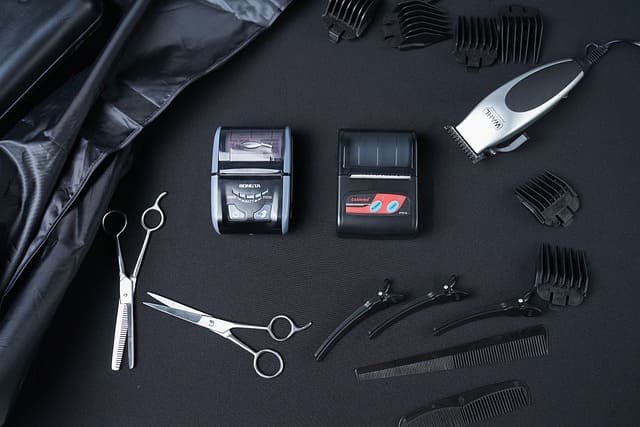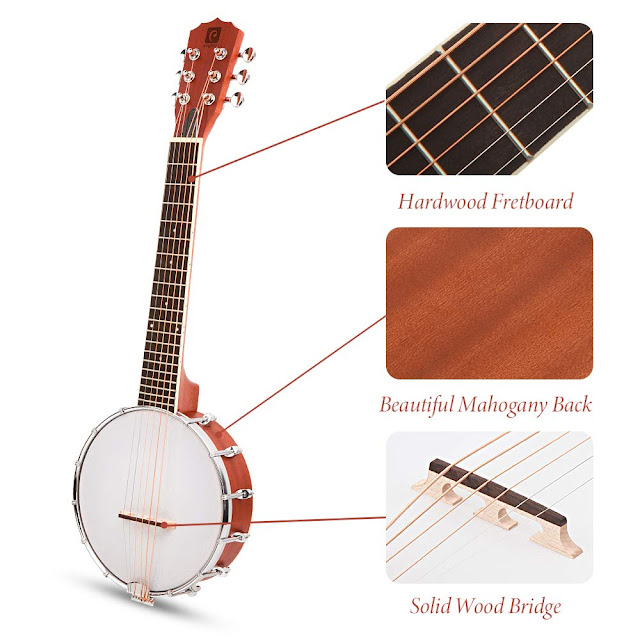In factories and warehouses, people use a machine called a dust collector to keep the air clean. The dust collector helps to get rid of really dangerous stuff that's in the air or gases that come out during the manufacturing process. This is important because it keeps the environment and the workplace safe. The dust collector works by taking out the bad stuff through tubes and pipes that filter the air. Usually, people put the dust collector either on the part that handles the materials or the part that collects the finished products.
Why Every Industry Needs an Industrial Dust Collector?
The use of an industrial dust collector is essential for every industry. The primary reason is to maintain workplace safety and protect employees from health hazards. Dust particles and hazardous materials can cause respiratory problems and other health issues if inhaled, so it's vital to ensure that the air quality in the workplace is clean and healthy.
Manufacturing processes produce a significant amount of dust and airborne particles, which can contribute to environmental pollution. An industrial dust collector works to remove these pollutants and maintain the air quality in the surrounding environment. It ensures that the air is free from hazardous materials, protecting not only the employees but also the environment.
Industrial hygiene and occupational safety are also critical factors in any industry. Companies must take measures to protect their employees from hazards that may arise from dust particles and other pollutants. Industrial dust collectors play a vital role in this regard by ensuring that the air in the workplace is clean and free of dangerous particles.
Dust control is another reason why industries need an industrial dust collector. It helps in maintaining clean air in the workplace and keeping the environment free from airborne particles. It also ensures that products are of good quality by preventing dust and other particles from contaminating the manufacturing process.
Moreover, industrial dust collectors aid in production efficiency by keeping the machines clean and dust-free. It reduces the downtime caused by maintenance and ensures that the machines are running smoothly, increasing productivity.
Every industry must have an industrial dust collector to maintain workplace safety, protect the respiratory system of employees, control hazardous materials, and maintain clean air. It is essential for industrial hygiene, occupational safety, and environmental pollution control. It also aids in dust control, improving product quality and production efficiency. Therefore, investing in an industrial dust collector is critical for every industry.
Dust Collection Mechanism
To keep the air clean and safe to breathe at work, we use a special way to take out harmful dust and particles. We use a filter to trap the bad stuff and then release clean air back into the room. We collect heavy dust using drums or bags that we can empty later.
For light dust and safe materials, we use boxes that are connected to pipes to catch fine particles. If we're dealing with flammable dust, we use special valves to avoid any accidents.
Industries that work with things like farming, chemicals, metals, and wood use machines called screw conveyors to move dust to places where it can be thrown away safely.
Dust Collection System Components
The industrial dust collector, also called a filter receiver, needs to be carefully looked at to make sure all the parts work together. Some of the parts are blowers, bucket elevators, bagging systems, conveyor transfers, dust filters, filter cleaning systems, dust receptacles, and dust removal systems.
The Most Common Dust Collector System, which I will go over in more detail later.
- Cartridge Organizer System
- Electrostatic Precipitators
- Cyclone Dust Collectors
- Dust Collector Shaker System
- Dust Collector with Pulse Jets
The Benefits of Using Dust Collectors
Maintaining a safe and healthy workplace environment is a top priority for any industrial business. Dust, debris, and other airborne particles can pose a significant threat to employee health, safety, and productivity. To mitigate these risks, industrial companies should consider implementing dust collectors as part of their safety and hygiene program.
One of the most significant benefits of using dust collectors is improving the air quality in the workplace. Dust and other harmful particles can create a hazardous environment, causing various health hazards such as respiratory issues, allergies, and other illnesses. Dust collectors are designed to capture and filter out these particles, resulting in cleaner air and a safer working environment.
In addition to improving air quality, dust collectors also promote industrial safety. Dust particles can create fire hazards, as they can ignite and cause explosions in some industrial settings. With effective dust management, the risk of fires and explosions can be significantly reduced, promoting the safety of employees and the workplace.
Filtration systems used in dust collectors can also help in complying with environmental regulations. Many regulatory bodies require industrial businesses to manage their waste and dust to prevent harm to the environment. Dust collectors can help in controlling air pollution by capturing and filtering out harmful particles before they can be released into the atmosphere.
Effective dust control is essential in maintaining a healthy workplace environment. Excessive dust can create an unclean and unpleasant atmosphere, leading to a decrease in employee productivity. By investing in dust collectors, companies can ensure a clean and hygienic workplace, promoting employee health and wellbeing, and ultimately increasing productivity.
Moreover, using dust collectors promotes industrial hygiene, which is essential in preventing work-related illnesses and injuries. By reducing exposure to dust and other airborne particles, employees are less likely to experience respiratory issues, allergies, and other illnesses that may be caused by inhaling harmful particles.
Dust collectors offer several benefits for industrial companies. From promoting clean air and maintaining industrial safety to promoting employee health and complying with environmental regulations, dust collectors are a valuable investment in any industrial business. By providing a cleaner and healthier work environment, dust collectors can ultimately lead to improved productivity and increased profits.
How can a dust collector help the industry's bottom line?
Enhanced Productivity
Accumulated dirt, dust, and debris can cause machinery to slow down and malfunction, leading to the need for routine maintenance. However, the installation of a dust collector can mitigate this risk and ensure that equipment operates at peak efficiency, resulting in increased productivity.
Improved Product Quality
During the manufacturing process, dust particles can settle on products, reducing their quality. By eliminating airborne dust and smoke, dust collectors prevent these contaminants from settling on finished products, resulting in better quality products and higher customer satisfaction.
Employee Satisfaction
The satisfaction of employees is a crucial factor in the success of any business. When air quality is poor, employees may experience health issues, resulting in poor work performance and job dissatisfaction. By maintaining clean air and a healthy work environment through the use of dust collectors, employee job satisfaction can be improved, leading to a more contented workforce and reduced employee turnover.
The Importance of Selecting the Appropriate Industrial Dust Collector
When choosing a dust collector for an industrial setting, it's not just about the size. You need to think about what the company needs. If you choose the wrong one, it can cost more money in the long run. The dust collector should match the specific work requirements and keep workers healthy and safe while also improving productivity.
Using the right dust collection equipment can save money on repairs and replacements and help keep employees happy. The size of the dust extractor should match the amount of air that needs to be cleaned, which will make it work better.
Particles in the Air
Airborne particles ranging from sub-micron particles to large material waste such as plastic or wood are now emitted by most industrial production units. In order to filter and clean these particles and fumes produced during the manufacturing process, industrial dust collectors are used.
Efficient capture of fine particulates and airborne particles and improved system efficiency can be achieved by selecting the appropriate size of dust collector.
The amount of filtered air in CFM is used to calculate the airflow volume of a dust collector. CFM is the unit of measurement for airflow in dust collection and filtering ventilation systems.
Increasing CFM requires larger motors and blowers, resulting in higher initial investment costs, energy costs, and the need for additional space for air filtration cloth media, which can disrupt filtration implementation.
When the airflow volume is insufficient, air filtration is ineffective and dust is not efficiently filtered, resulting in decreased performance and air quality.
The ratio of Air to Cloth
The airflow volume, measured in cubic feet per minute, is divided by the filter media's size to determine the air-to-cloth ratio. This indicates the amount of air passing through each square foot of the filter media per minute. When choosing a dust collector for a manufacturing facility, this ratio is very important.
When you choose the right dust collection system, you can save a lot of time and money. A dust collector's CFM and air-to-cloth ratio determine its performance. A well-designed industrial dust collector reduces operating and machinery costs while simultaneously improving workplace safety and cleanliness.
Dust Collector Performance Optimization
The installation of dust collectors in a workplace helps to maintain a clean and dust-free environment by purifying the air. The use of a dust collector can bring about several benefits, such as:
Enhanced safety and better health for workers.
Improved product quality.
Higher employee satisfaction.
Compliance with all applicable regulations.
Increased productivity levels.
The Most Common Types of Industrial Dust Collectors
1. Wet Scrubbers
Wet Scrubbers, also called wet dust collectors, are highly efficient devices that control air pollution in industrial settings. These devices utilize a scrubbing liquid, typically water, to remove particles or gases from exhaust streams. When a contaminated gas stream encounters the scrubbing liquid, the particulate or gas is gathered by the liquid, which absorbs the fine particles or gases and eliminates them from the air. This process produces wastewater that may be contaminated.
In the subsequent phase, a mist eliminator is utilized to extract tiny droplets. Wet dust collectors are also utilized to capture hazardous gas particles.
2. Shaker Type Dust Collectors
Shaker dust collectors, also known as shake-cleaning baghouse systems, are utilized by various industries including steel mills, mining, foundries, and power plants. These industries rely on compressed air for bag cleaning.
Compared to compressed air self-cleaning units, the compact design of the dust cleaning system allows for continuous cleaning with less capital investment. Moreover, it can operate without compressed air in moderate dust load conditions, resulting in lower energy usage. Its smaller installation footprint makes it easier to implement even in limited spaces.
Additionally, shaker dust collectors are capable of handling high air volumes with moderate dust loads, while still delivering efficient filtration.
3. Cyclone Dust Collectors
Cyclone dust collectors are gaining popularity in various industries, such as agriculture plants, recycling plants, and paper mills, due to their ability to filter out larger particles over 20 microns. These collectors work by utilizing centrifugal force, acting similarly to an inertial separator.
Cyclone systems are often used as pre-cleaners to remove heavier and larger particles mixed with fine dust. They are suitable for general purposes that use cyclonic action within the cyclone collection chamber to purify the air. These collectors can manage extremely high dust concentrations, making them more efficient for critical applications.
4. Dust Collectors with Pulse Jets
Pulse-jet dust collectors are among the most widely used industrial dust collectors, made of various special alloys like aluminum, carbon steel, and stainless steel. They are resistant to high temperatures and pressures and easily adaptable to many manufacturing operations, including mineral, chemical, food processing, and metal fabrication. The system sends a blast of air through the bag, breaking it and discharging the dust cake for disposal.
5. Cartridge Collectors
Cartridge dust collectors are unique from other industrial dust collectors in that they enable production workers to access the cartridge without getting dirty, eliminating the need to work in confined spaces. It filters sub-micron dust particles with a constant differential pressure loss, similar to an efficient compressed air self-cleaning system, and filters highly contaminated air volumes using cartridges. The clean air can be re-circulated depending on the application, requiring only regular cartridge replacement.
6. Electrostatic Precipitators (ESP)
Electrostatic precipitators (ESP) are air pollution control systems that use high-voltage electricity to remove dust and smoke particles from the air while charging particles positively or negatively. They are widely used in industrial power plants, cement plants, chemical plants, and paper mills. ESP requires less power to transport air and is efficient in removing dust particles larger than one micron. The charged dust and smoke particles are deposited on collector plates, with a collection efficiency greater than 99 percent. The collected particles are later removed, and the plates can be washed in water.
Should the Dust Collector be installed inside or outside?
When deciding where to install an industrial dust collector, numerous factors should be taken into account. This guide will assist you in determining whether an indoor or outdoor installation is preferable for your manufacturing facility.
Several aspects should be considered when selecting the ideal location for a dust collection system, such as having enough space to accommodate the equipment required to install and maintain the system. Additionally, forklifts, scissor lifts, and cranes must be able to access the area with ease.
Given that manufacturing space is typically costly and valuable, selecting the most suitable location for your dust extractor is critical. If you have an outdoor area, it is best to avoid installing it inside.
If the dust is combustible, such as aluminum dust, an outdoor dust collector is preferable for safety reasons.
When installing an outdoor dust collector, it is important to ensure that it is protected from inclement weather, such as rain and snow, by considering the roofs. Installing the dust collector indoors, where less ducting is required, may be preferable.
If a dust separator is installed in a cold-weather environment, the fan and connecting ductwork remain cool even after the system has been restarted, resulting in the cooler return air.
Tips for Using a Dust Collector Safely
Managing Dust Collection and Disposal
Every dust collector should have a designated area for disposing of collected dust. It is important to regularly empty and clear the area, using an airlock or a standard 55-gallon drum.
Proper disposal of dust is crucial to prevent fire or explosion hazards that may result from a buildup of dust in the collector. Neglecting the accumulation of dust can also impact the collector's efficiency.
Regular Filter Maintenance
Filters are key components of a dust collection system, and they should be checked and replaced periodically, as needed. When the differential pressure limit of the system is reached, cleaning or replacing filters becomes critical. Using the appropriate filter is also essential to avoid compromising the collector's efficiency.
Which dust collector is best suited to your needs?
Effective dust collection is crucial for maintaining good air quality in the workplace, as it prevents harmful dust particles from accumulating and being released into the air. But with so many different dust collectors available, it can be challenging to determine which one is best suited to your specific requirements.
To help ensure you choose the right dust collector, it's important to consider factors such as the type and amount of dust produced in your workplace, the size of your facility, and any relevant safety or environmental regulations.
Selecting the right dust collection system not only improves air quality, but can also extend the lifespan of your dust collector, increase its efficiency, and improve system performance. This can save you time and money in the long run by reducing maintenance and replacement costs.
One highly effective option for collecting dry particulate with light or heavy dust loadings is a dry dust collector. These collectors use cartridges or baghouse collectors to filter out dust, which is then collected in a hopper or bin for disposal.
Dry dust collectors come in a variety of styles and models, each with its own unique features and advantages. For instance, some collectors may be more suitable for smaller facilities, while others may be designed to handle larger volumes of dust or heavy-duty applications. It's important to choose a dry dust collector that meets your specific needs and is designed to work with your particular equipment or processes.
In short, selecting the right dust collection system is critical to improving air quality, increasing efficiency, and extending the lifespan of your equipment. With the right system in place, you can ensure a safe and healthy work environment while also reducing maintenance and replacement costs.
FAQs: Industrial Dust Collector
Q: What is the recommended CFM for a dust collector?
Ans: The recommended CFM value for a dust collector is typically calculated based on the air velocity and cross-sectional area of the hood, with a range of 100-200 feet per minute depending on the dust characteristics. Accurate measurement of the volume of air passing through the baghouse is also crucial for adequate ventilation.
Q: What are the benefits of using a cyclone dust collector?
Ans: Cyclone dust collectors are commonly used as pre-filter systems, which can lower the dust loading on downstream baghouse and cartridge dust collectors. By using a cyclone pre-cleaner, the wear and tear on filters and cleaning systems can be reduced, ultimately leading to lower dust collector maintenance and servicing costs.
Q: What size of piping should be used for a dust collection system?
Ans: The size of piping used in a dust collection system ideally matches the diameter of the dust collector's intake. For example, if the intake is 6 inches in diameter, it is recommended to use 6-inch piping. However, if your equipment has 4-inch dust connector ports, you can still use a 6-inch dust collector by using a 4-inch to 6-inch adapter.
Q: Why is grounding important for dust collection systems?
Ans: It is important to ground dust collection systems to prevent static electricity build-up, which can cause a fire if not properly discharged. Grounding helps to ensure that any accumulated static electricity is safely discharged to the ground.
Q: How much power does a dust collector require?
Ans: The amount of power required for a dust collector depends on the size of the system and the number of tools it will be connected to. A 1.5 HP dust collector can handle a small duct system, but if you have several tools in your shop, a 2 HP system may be more appropriate. It's important to ensure that the dust collector has enough power to draw the dust through the ductwork and effectively capture it.
Wrapping Up:
In numerous industries, including chemical, cement, agrochemical, metal, food, and mineral production, the generation of substantial amounts of dust is common. This dust permeates the working environment, posing a health risk to employees who are exposed to its hazardous particles and can cause various health issues.
Dust removal systems employ different principles depending on the type of industrial dust collector and the pollutants present. Therefore, it is crucial to eliminate dust particles to ensure a safe and healthy work environment for workers.

![Top 10 Christmas Gifts For Men - [A comprehensive Guide] Top 10 Christmas Gifts For Men - [A comprehensive Guide]](https://blogger.googleusercontent.com/img/b/R29vZ2xl/AVvXsEgXldqR1IwS1brhyRTJ-K1w4WYXiRWbgwRJKfsxHyQheI6M3fQvDad2TGbtEYJB37m9Ex3j9VqK7cnFG78HNahWSguI7p4pzFLicyBdGMcolvtMl59-44aRisxSP9rK1ONtjNI49VHYQgkY_g6aZLoF3Jk1IgylqOKZ7NeMlvfXELZOFaUAcAJGYkEq/w991/christmas-gift-ideas-2022.jpg)











![History of The Banjo Instrument [2023] History of The Banjo Instrument [2023]](https://blogger.googleusercontent.com/img/b/R29vZ2xl/AVvXsEgCJe0qkwuPmiXNzt-t-RCONGdyJ7xZBVqibeN2EauHGTd7G0ejJ0xx9KVBYyEzpPmW3AgIEIceKYMnUf6p3u7RFrYJ0KJePpQp35KTCWjn7c_sgrQyN4Y1Gbp-YhHUfUL3NZXHGBcZdyZpKpxDeUJ_8PdZc8Hoqtguqcpvlbs2p1fPU1bCe8rP_VHG/w991/banjo-instrument1-min.png)








![Choosing the Right Coconut Cutting Machine Types: Buyer's Guide [2023] Choosing the Right Coconut Cutting Machine Types: Buyer's Guide [2023]](https://blogger.googleusercontent.com/img/b/R29vZ2xl/AVvXsEhFDjjf_fEKtsYneRxJXJ7LoXjoOuFva7htkWzn-7dDYtDZXAcN6SHSPI1Vd12iYBvTBvzdK-RdQCR9fd4kTHUBBz1MvB89FK8jDKG4NbD-_K5C9JIjShaJZW3E_Dmd7v0V-q6UFMSsMFPxKo1e7617EnOGCI-VkTEV4TS6JJjZjs0te0sRoJic_p8K/w991/industrial-coconut-cutting-machine.webp)


![The Right Industrial Dust Collector for Your Business [2023] The Right Industrial Dust Collector for Your Business [2023]](https://blogger.googleusercontent.com/img/b/R29vZ2xl/AVvXsEiVfCuQvWbbL0uvFNvXQSB9bRAbW99-W3ZfkmffwQTg55b_mz_XMWafMSNjUop8XmiT7OIt7WqtniDN81ZJErbqxvznophchpNgMtLmwX3UghumUh6OEqaavE13IHiZxMFIUcyUTR8avUY/w991/Industrial-dust-collector.jpeg)






![The Best Antivirus Apps For Android - [2023] The Best Antivirus Apps For Android - [2023]](https://blogger.googleusercontent.com/img/b/R29vZ2xl/AVvXsEj3Yjm36h1U18dmYifXs9XZCUy6ch_XK0XOXf8hVW4zcVUDW0OiVXQZT0Sr77Yjep1CUOHP3OqlrMIzRJLYasizRmQUilnXjozbQ8D0iroUBbeFEUD2MwaJdGuE4RJaqrfVHFX-_OoIhOyPr_K10ky6goZUJtdqUWIOkCibIoNylnXXzR-AksQYPTQ0/s72-w640-c-h388/antivirus-android-2023.png)
![15 Travel Packing Tips For Holiday: Updated [2023] 15 Travel Packing Tips For Holiday: Updated [2023]](https://blogger.googleusercontent.com/img/b/R29vZ2xl/AVvXsEgJfOBYMtma5U34TjVvkOWNnaRwVA_ty2-tKck6tTU24-cAcOu4boybt3T_8BF66hAqzOriHVxJdRbzjLq9ZfhsMAUTQ80ja19GPktAAEnW0WPKQgsKJTXXJzIeKHYE40HeljCSC6UVTJA/s72-w640-c-h360/Travel-packing.jpg)

